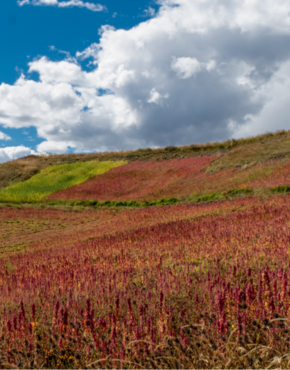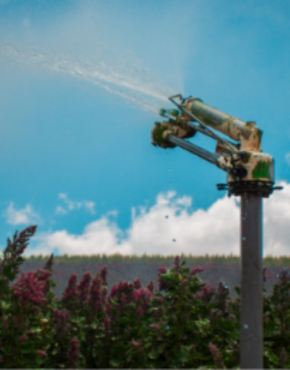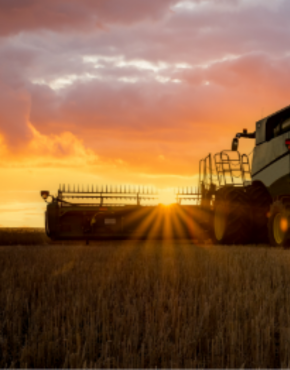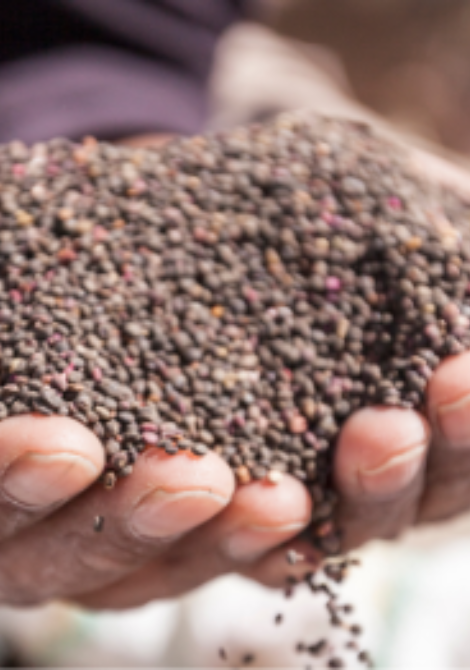

In Puglia, the spread of wheat monoculture or its rotation with renewal crops that are becoming less profitable highlights the need to explore and develop new crops. Quinoa, for its qualitative and productive characteristics, coupled with limited agronomic requirements, can represent a viable alternative in Puglia's cereal rotations.
The cultivation area and production in the main quinoa-producing countries (Bolivia, Peru, and Ecuador) have at least doubled from 1992 to 2010, while Italy imported 2,241 tonnes in 2016 (FAO and European Commission). Quinoa is a renewal crop potentially capable of increasing farmers' incomes, thanks to its high market price, growing demand, and low production at the European level, which necessitates importation from South America, with associated transportation costs and negative environmental impact.
The crop has been tested in Italy in various areas, including the Puglia region, where CREA-CER has been conducting research for several years with the aim of selecting superior genotypes for both quantitative and qualitative productivity suitable for cultivation in Puglia. Among the evaluated lines, some very promising ones have been selected.
However, during the experimentation and repeated discussions among the various members of the GO (Group Organization), several production-related issues have emerged, including the development of an agronomic technique for weed control, the selection and adjustment of the harvesting machine, the development of a sustainable technique for the removal of saponins from the seed, whose excess limits the use in this pseudocereal and negatively affects the sensory quality of the finished products, imparting a bitter and astringent taste. Another interesting aspect to investigate concerns the initial processing of the product, understood as the grinding of the seed for flour production.
The overarching goal of this project is to promote quinoa cultivation in Puglia, consolidating its supply chain from producers to flour production. This will be achieved through the optimization of agronomic practices, with particular emphasis on weed control and the harvesting process. The production phase of flours destined for niche markets (such as celiacs and vegans) will be improved with a focus on environmental, economic, and social sustainability. Additionally, the ongoing research activity on quinoa at CREA-CI since 2009 will be continued, aiming to complete the "quantitative-qualitative" validation phase of the results obtained on selected quinoa genetic materials over the years for their adaptability to Puglia's areas.
The main operational objectives of the project can be outlined as follows:


The project will produce numerous effects.
From a production standpoint, strengthening the know-how (varieties, cultivation techniques, harvesting machinery) related to quinoa cultivation should enable Puglia producers to seize opportunities offered by a growing market and a country that is now a strong importer. From this perspective, an increase in the area devoted to quinoa and a significant rise in its production in Puglia are expected. The production impact will also affect downstream segments of the supply chain (processing), particularly storage centers and primary processing companies.
The consolidation of the quinoa supply chain in Puglia, allowing cereal farmers to introduce a high-income and high-nutritional-value crop, contributes to promoting the profitability, productivity, and competitiveness of Puglia's agricultural enterprises. Additionally, it fosters the process of crop diversification and the profitability of other businesses within the quinoa supply chain (storers, millers, etc.).
The introduction of quinoa into crop rotations, which interrupts the biological cycles of cereal pests, will contribute to improving environmental protection methods and reducing the environmental impact of agricultural activities. The availability of domestically sourced seeds on the market will help reduce greenhouse gas emissions resulting from transportation from other continents.
From a social standpoint, the project is expected to promote job creation, especially in both upstream and downstream segments of the supply chain. Additionally, an improvement in job quality (particularly in terms of environmental and income aspects) is anticipated, as well as a positive impact on civil society and consumers. They will have access to domestically sourced quinoa of good quality and low environmental impact.



The main innovations that the GO intends to implement with this proposal are of various types. In particular:
